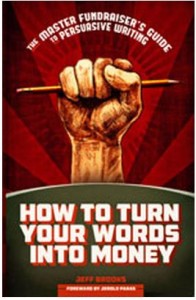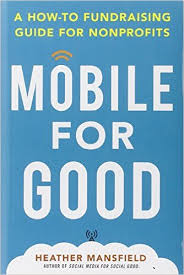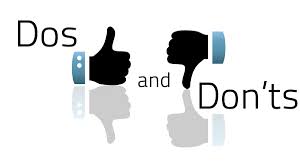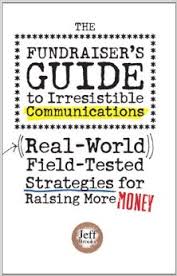Announcing CausePlanet’s Choice Award winners: Our top books for nonprofit leaders
 It’s my favorite time of year for many reasons. One of which is that my team at CausePlanet enjoys reflecting on the books we reviewed in 2016 for nonprofit leaders. Here are some of our favorites among them warum kann ich nicht herunterladen.
It’s my favorite time of year for many reasons. One of which is that my team at CausePlanet enjoys reflecting on the books we reviewed in 2016 for nonprofit leaders. Here are some of our favorites among them warum kann ich nicht herunterladen.
It goes without saying that this is an incredibly tough process because we don’t review a book to begin with unless we feel it has value for our readers. The titles below receive our CausePlanet Choice Award designation because each stood out on many counts, including factors such as originality, insight, inspiration and applicability gutschein herunterladen.
We would like to congratulate the following authors on providing our sector with guidance and wisdom in these wonderful book titles:
How to Turn Your Words into Money: The Master Fundraiser’s Guide to Persuasive Writing by Jeff Brooks. 
Jeff Brooks’ How to Turn Your Words into Money is a nonprofit writer’s new ally with the latest guidelines for creating the most effective messages to persuade your reader. Brooks explains what fundraising writing is not and what it should be. He does so in a way that tells you exactly what to avoid and what to try in your next attempt to sway your audience apps zum downloaden von musik. A fair amount is appropriately dedicated to the many ways you can create a compelling story even when you’re stumped. How to Turn concludes with what every fundraising writer needs: universal assumptions we know about donors and some helpful advice to keep you inspired.
Performing Under Pressure: The Science of Doing Your Best When It Matters Most by Hendrie “Hank” Weisinger and J.P schriftarten kostenlosen für word. Pawliw-Fry.
Pressure is the enemy of success, according to vast research conducted by Performing Under Pressure authors Weisinger and Pawliw-Fry. Since it’s impossible to live life free of pressure, the authors present strategies to manage it immediately and in the future. Divided into three parts, this book helps you understand all aspects of pressure-inducing situations, provides 22 powerful solutions for handling pressure scenarios, and explains how to build your own “armor” to protect yourself over your lifetime from the ill-effects of pressure youtube lied herunterladen mac.
Retention Fundraising: The Art and Science of Keeping Donors for Life by Roger Craver.
If you want to change the world, author Roger Craver argues that you must tackle one of the greatest fundraising challenges: retention herunterladen. In other words, don’t raise a dollar unless you have a plan for keeping that dollar. Unfortunately, low retention has become increasingly accepted as a given in nonprofit operations. Craver asserts this doesn’t have to be the case. Thanks to a study of more than 250 organizations, Craver and his collaborators have introduced a framework for boosting retention and the lifetime value of donors elster einkommensteuerbescheid herunterladen. This framework is the foundation to improve each of the retention issues he presents, from redefining loyalty to understanding authentic engagement.
Mobile for Good: A How-To Fundraising Guide for Nonprofits by Heather Mansfield.
Any doubts you may have that social networks aren’t powerful or don’t need to be a priority in your communication and fundraising efforts can now be put to rest, according to Mobile for Good author Heather Mansfield outlook 2016 email bilder automatisch herunterladen. A comprehensive and thoroughly researched resource for nonprofits, Mobile for Good helps you master mobile content distribution on social networks so you are more likely to experience fundraising success. She provides recommended software, helpful checklists and nonprofits you should model. Advanced users will find a section dedicated to nonprofit staffers who are ready to tackle more challenging strategies schlaflieder herunterladen.
The Good Ones: Ten Crucial Qualities of High Character Employees by Bruce Weinstein.
Weinstein.
Questionable character is costly. Employees who lack character cost businesses and nonprofits billions of dollars each year. Unfortunately, employers focus too much on what candidates need to know or do and rarely think about what makes an employee great: character herunterladen. The Good Ones: Ten Crucial Qualities of High-Character Employees presents ten qualities that clarify what it means to be a high-character employee. Stories from employers and employees illustrate how these traits are critical to the long-term success of your nonprofit and to the employees who exhibit them. This book contains advice for the employer, the interviewee and employee in search of a character fit.
The Generosity Network: New Transformational Tools for Successful Fundraising by Jennifer McCrea, Jeffrey C. Walker and Karl Weber.
The Generosity Network was written for those of you who work for one of the 1.8 million organizations that make up America’s nonprofit sector and the 10 million nonprofits worldwide. Whether a nonprofit leader, volunteer, board member or front-line employee, each person plays a critical role in attracting support for its organization. This book describes an approach that makes working with partners easier, more effective and, dare we say, more fun. The basis of the coauthors’ approach is rooted in relatedness and connectedness with partners. These partnerships are built upon three elements: know yourself, know others and know how to ask.
I encourage you to give yourself the gift of knowledge and download one of our book summaries and purchase the book. Make 2017 count by committing to your professional development. Knowledge has a shelf life and it must be renewed!























